Are you making a clothing garment with panels to sew together? The schematics can be confusing, and below is a photo tutorial on what they look like and how to dissect them.
For joining panels, I use whip stitching. I use stitch markers, aka yarn, to tie bow tie knots to hold the panels together so they can evenly sew.
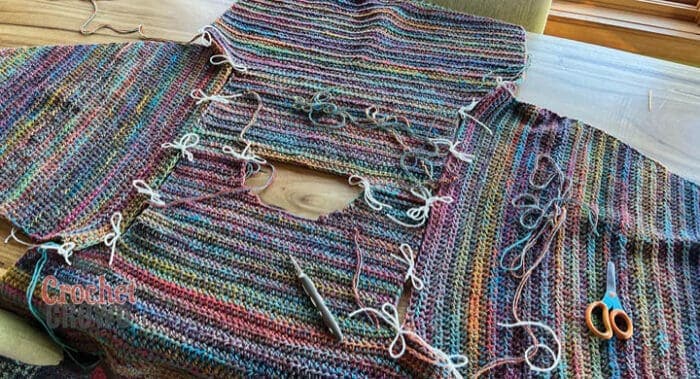
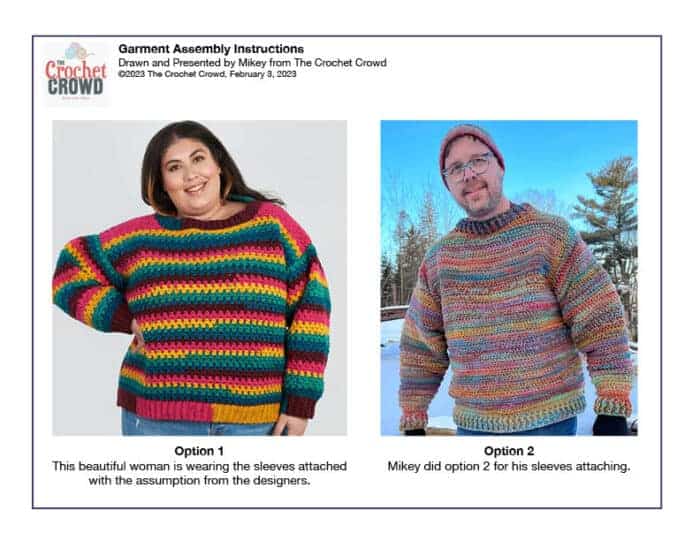
Both free patterns are available:
The beautiful woman wearing the sweater, the sweater is called Party People Crochet Pullover. Mikey's sweater is Men's Pullover Sweater.
How to Whip Stitch
Option 1 - Assumed by Designers
The designers will show a schematic of what the panels of the garment will look like. In this format, the panels are flat. Many designers put the front and back overlaid with each other to save paper space.
In the schematic below, I placed the gray in the neckline to show you the back panel is only visible there when they are overlaid.
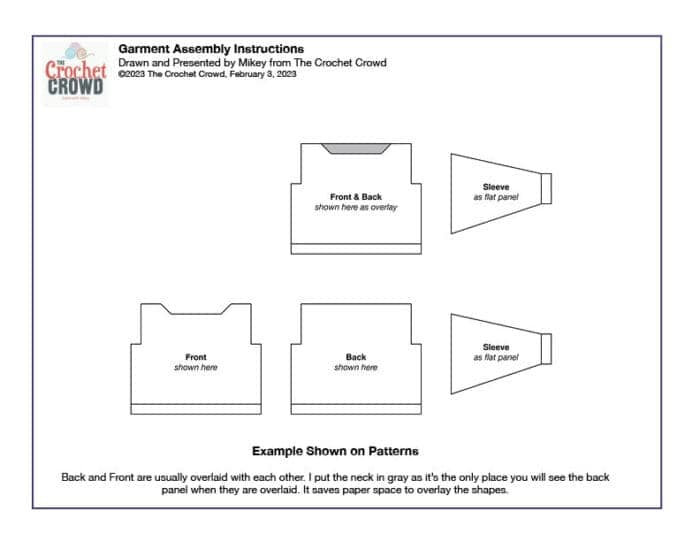
When you are ready to attach. Place the garment panels with the wrong side (WS) facing up. This will case the sewing to be on the inside of the garment. Attach the shoulders together as step 1.
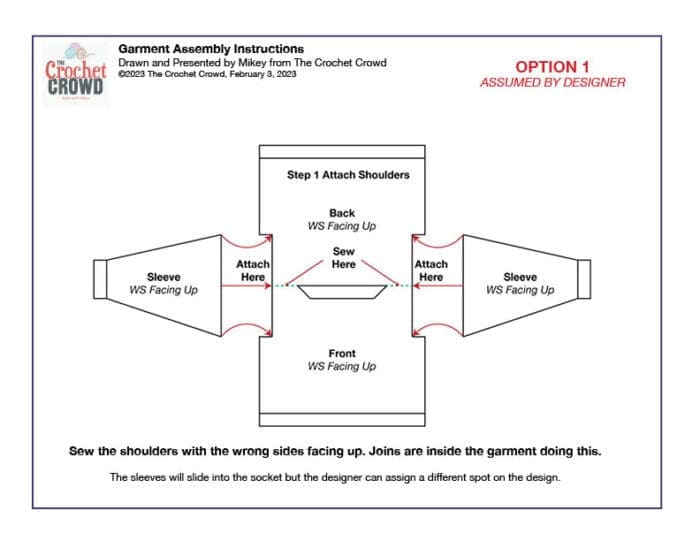
The sleeves are sewn into the flat area inside the indent area. Use the stitch markers to hold them into position as sometimes the sleeves me slightly a different size.
See the picture of the colourful sweater showing you that the sleeve is squared off in the indent when it's sewn into position.
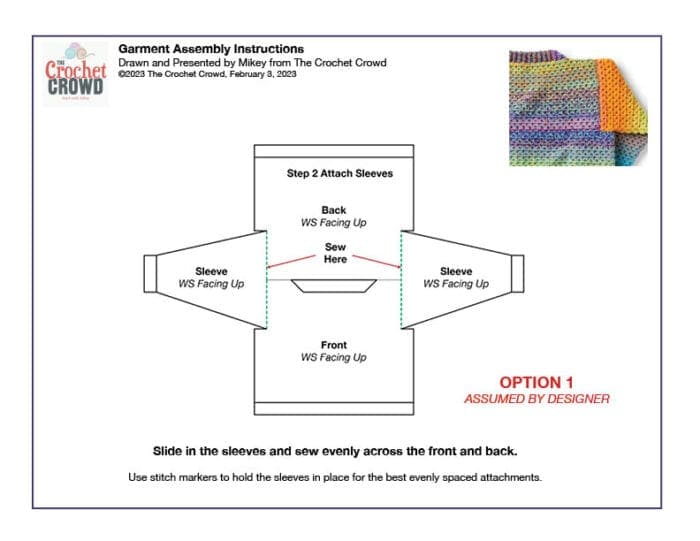
Fold the front and back panels over top of each other so the wrong side (WS) is facing up. That's inside out.
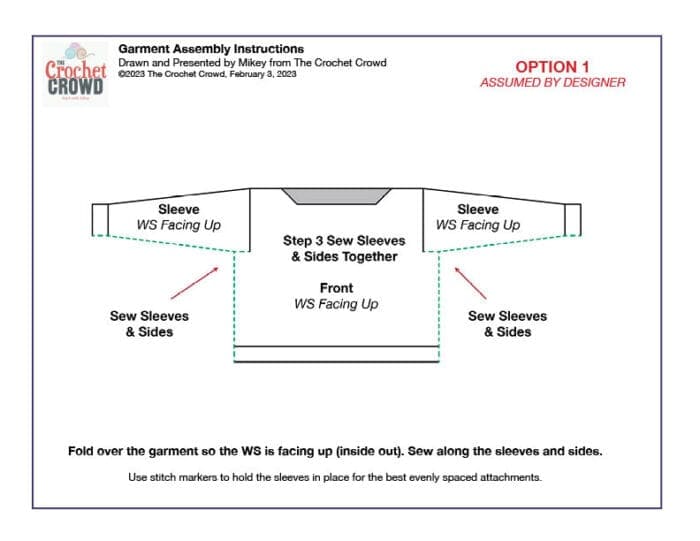
Turn the garment right-side out as if you were going to wear it out in public. All of the seams you did will be inside the garment. The sleeves will look squared off in this format.
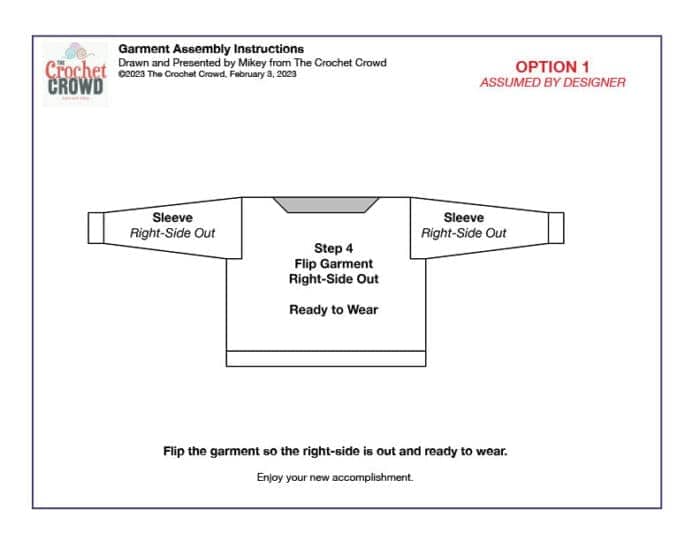
Option 2 - Contouring the Turn
For Mikey's sweater, through lack of information but having seen it done before, he contoured the corners by joining the sleeve at the outside of the panel and forced the sleeve to make the 90-degree turn. While it bunches up sitting flat, our bodies are not flat and it contours under the arm. If the designer wants this, they will highlight it in the pattern. Assume option 1 unless the designer says differently.
Sew the shoulders together but look where the sleeves will be attached for option 2.
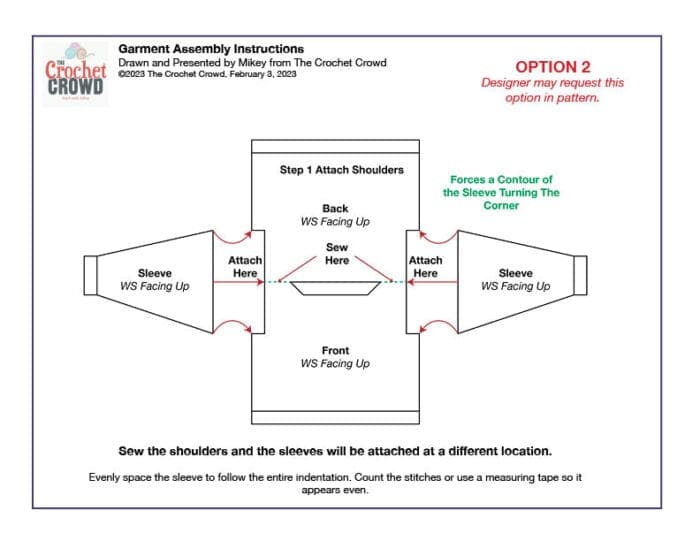
Using stitch markers, evenly space the sleeve from the edge and force the sleeve on the small indent to make the 90-degree turn. This will pull the 90-degree turn to be rounded off in appearance.
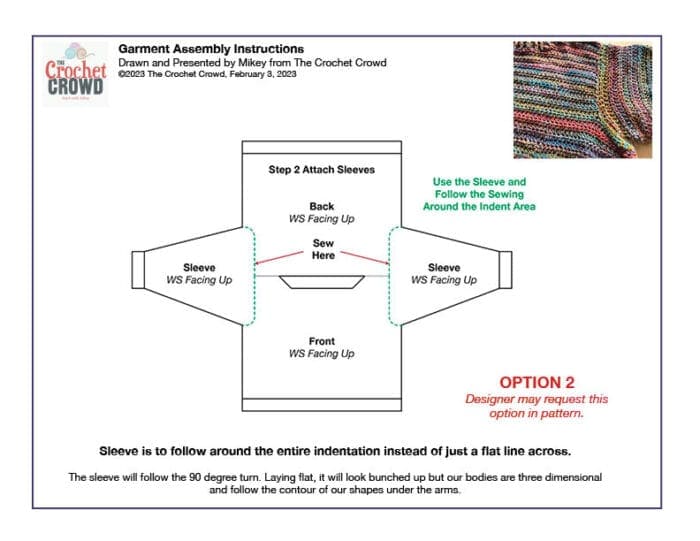
The sleeves will have a contoured look based on the last step. You just have to sew the remaining of the sleeve and side edge on both sides to finish.
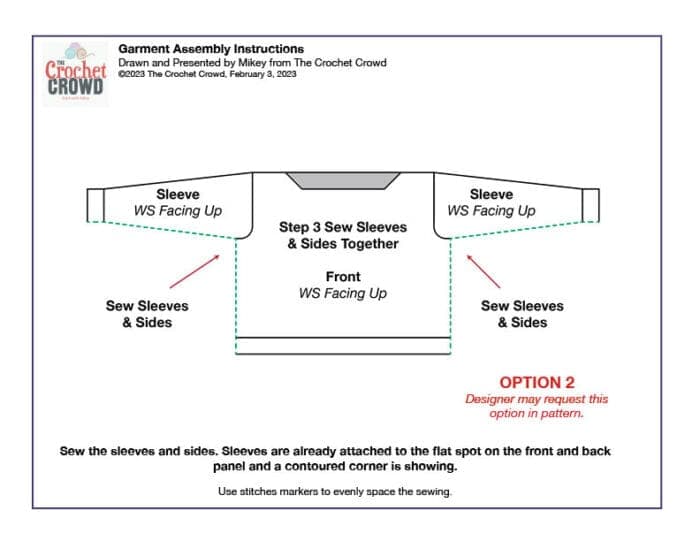
Flip the garment right-side out so it's ready to wear out. You will notice the sleeves will appear in this format with Option 2.
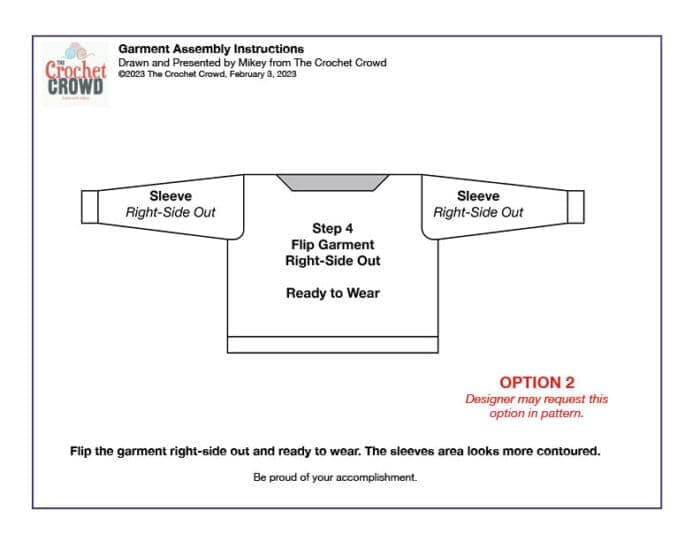
Can You Tell the Difference?
Mikey's sweaters were joined with Option B as he thought it was the right way to do it. However, he saw this before and thought it was the right way. However, the designer's assumption is Option 1 if it's not told any differently.
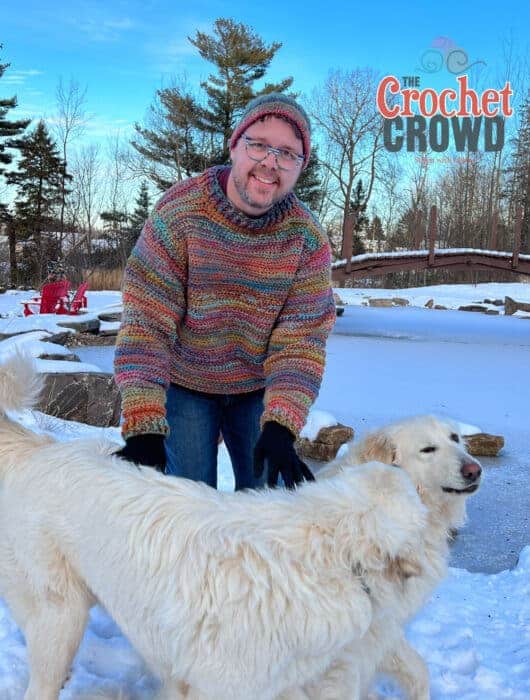
Jennifer says
Comparing the two methods of joining set in sleeves was very helpful. It's a subtle difference when looking at the pattern but the wearability of option 2 is greatly increased over option 1. I prefer set in sleeves rather than the drop sleeve style even though it is in vogue right now. And, it is a bit more involved to join but worth the effort. Learning day by day.